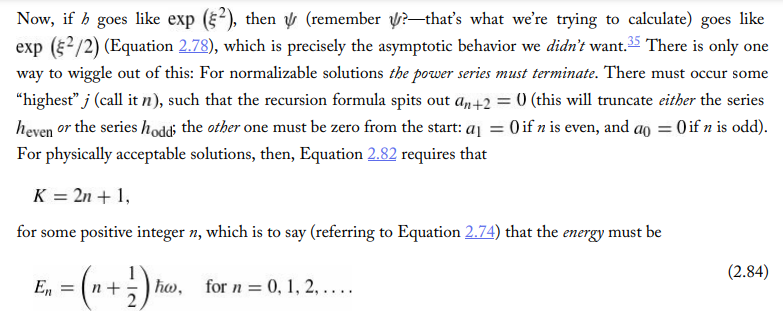Working my way through Griffiths' "Introduction to Quantum Mechanics", I found the following excerpt:
The result is the same as what I'd gotten using the operators' method, and yet in this context, it doesn't make sense since the text clearly states that there must exist a singular n ("some" highest j for which $a_{j+2} = 0$), and since K (and thus E) is related to n by the equation $K = 2n+1$, we should be getting one allowed level of energy E.
I know there obviously must be a flaw in my logic, and yet I am unable to put my hand on it.

